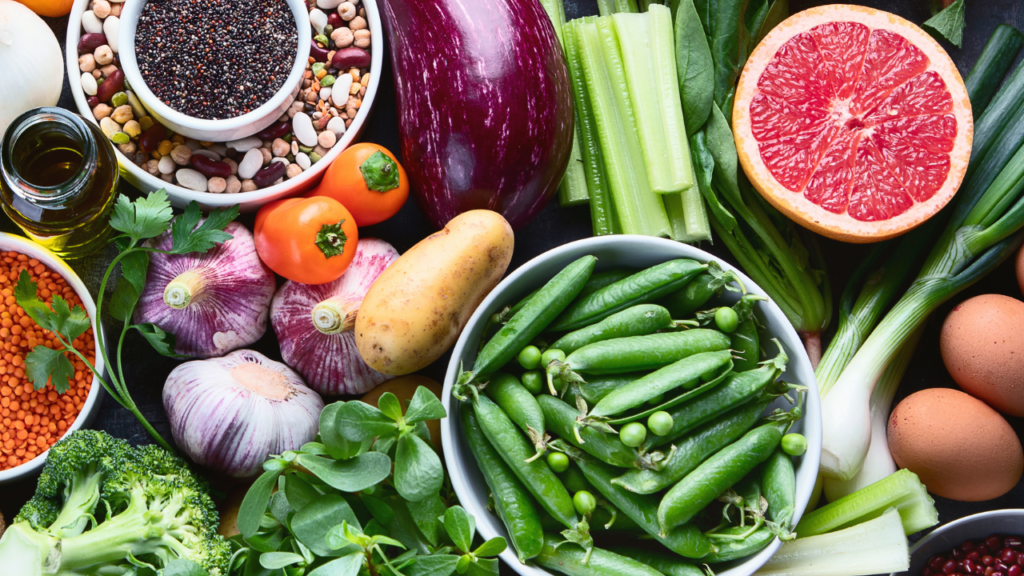

As someone who’s always leaned toward a plant-based lifestyle, discovering the Healthy Eating Plate felt like a natural next step in my wellness journey. I first came across it through a recent course, where Dr. Walter Willett, a Harvard nutrition expert, broke down the research-backed components of this balanced approach to eating. What really stood out to me was how deeply rooted the guidelines are in science—food composition studies, controlled feeding trials, and long-term cohort studies all support the recommendations. This foundation added a level of credibility that really resonated with me, especially as someone passionate about evidence-based wellness.
Reimagining My Plate
Before adopting the Healthy Eating Plate guidelines, my meals were fairly simple: a large portion of leafy greens, some form of protein (usually chicken or tofu), and a small serving of whole grains like brown rice or quinoa. While not unhealthy, my plate lacked variety and color. Since diving into this model, I’ve made intentional changes to bring more balance and vibrancy to my meals. I now regularly add a rainbow of vegetables—purple onions, cherry tomatoes, cucumbers, carrots—and rotate my greens instead of sticking to just one type.
Another major shift was reducing my intake of chicken and incorporating more plant-based and heart-healthy protein sources like salmon, beans, and tofu. I typically enjoy salmon twice a week, as I’m not a huge fan of meat. I’ve also started eating homemade red cabbage sauerkraut before meals to support digestion and gut health.
To deepen my understanding and stay inspired, I recently enrolled in an online Plant-Based Nutrition certificate program through the T. Colin Campbell Center for Nutrition Studies. While I haven’t started the coursework yet, I’m excited to dive in and will be sure to share any new insights and takeaways with you along the way.
Real Results, Real Motivation
These dietary adjustments have had a noticeable impact on my everyday life. My energy levels are more stable throughout the day, I maintain a healthy weight without feeling deprived, and I rarely experience intense sugar cravings. When I do, I turn to naturally sweet options like fruit or a comforting almond butter sandwich. This shift isn’t about restriction—it’s about nourishment and sustainability.
A big motivator behind this journey has been personal: watching my father go through heart bypass surgery was a wake-up call. It made me realize that preventive care through nutrition isn’t just an option—it’s a responsibility, both for myself and for the people I care about.
Bridging Science with Soul
One of the most valuable takeaways from this learning experience has been understanding the connection between nutrition and joy. Dr. Willett spoke about the importance of enjoying food—experimenting with new flavors, sharing meals with loved ones, and finding satisfaction in what we eat. That resonated with me deeply, especially since I’ve been on a mindfulness path for years now.
Ayurveda also came up in my yoga teacher training, where we were encouraged to eat whole, local, and seasonal foods. While rooted in ancient wisdom, that idea beautifully complements the science behind the Healthy Eating Plate. Both approaches emphasize balance, mindfulness, and tuning into your body’s needs—principles I carry with me every day.
A Message for Those Considering Change
If I were guiding someone through a dietary shift like this, I’d begin by asking for permission to share my personal journey. I’d explain that while change can be challenging, having a strong “why” makes it not only manageable but also meaningful—and even joyful. I’d encourage them to reflect on their motivations, identify potential barriers, and create small, personalized steps to move forward. Whether it’s reading a book, listening to a podcast, or simply making one small change at a time, the most important thing is to start where you are and stay curious.
Supporting Resources
- Source: Harvard T.H. Chan School of Public Health – Healthy Eating Plate
- Plant-based diets are linked to better metabolic health (NCBI, 2019).
- Omega-3s (in salmon) support heart health and brain function (American Heart Association, 2018).
- Fermented foods like sauerkraut contain probiotics, which support gut microbiota (Harvard Health, 2020).
- The Healthy Eating Plate aligns with heart-healthy guidelines (American College of Cardiology, 2019).
- Research supports mindful eating for better digestion and weight management (NCBI, 2015).



